As an avid backpacker, the discovery of snowshoeing thrilled me. When it comes to cold-weather activities, it’s tough to beat the silence of the woods and the freedom to roam that snow can offer.
Like many people, I started out on classic tube-frame aluminum snowshoes with only underfoot crampons for traction. These are great for flatter trails and fluffier snow, but if you want to go uphill, particularly in snow like the dense Cascade concrete that we usually have in the mountains around Seattle, you’ll probably need something a little more technical.

Enter the MSR Lightning Ascents. I’ve owned the 25-inch version for two winters now, and have taken them on easy 3-mile day hikes and steep overnights in the Cascades, and they can be game-changing in tough terrain. They’re perfect for intense uphill sections, rolling terrain and nearly all snow conditions. Although they are an investment, they can last decades with proper care. They have earned many Editor’s Choice and Top Pick awards over the years from sites like Outdoor Gear Lab and Backpacker magazine. Read on to see why.
Design and Stride
If you’ve ever snowshoed before, you’re probably familiar with that bow-legged feeling when you’re done. Well, not with the Lightning Ascents. The streamlined shape is designed for a more natural gait. The women’s version in particular is ergonomically designed for a narrower stride and a smaller shoe size, so you don’t have to walk like a duck to avoid hitting your snowshoes together. And though they’re labeled women’s, don’t shy away if you are a person of any gender who prefers a narrower gait or just lighter snowshoes. The only thing that really matters is weight load.
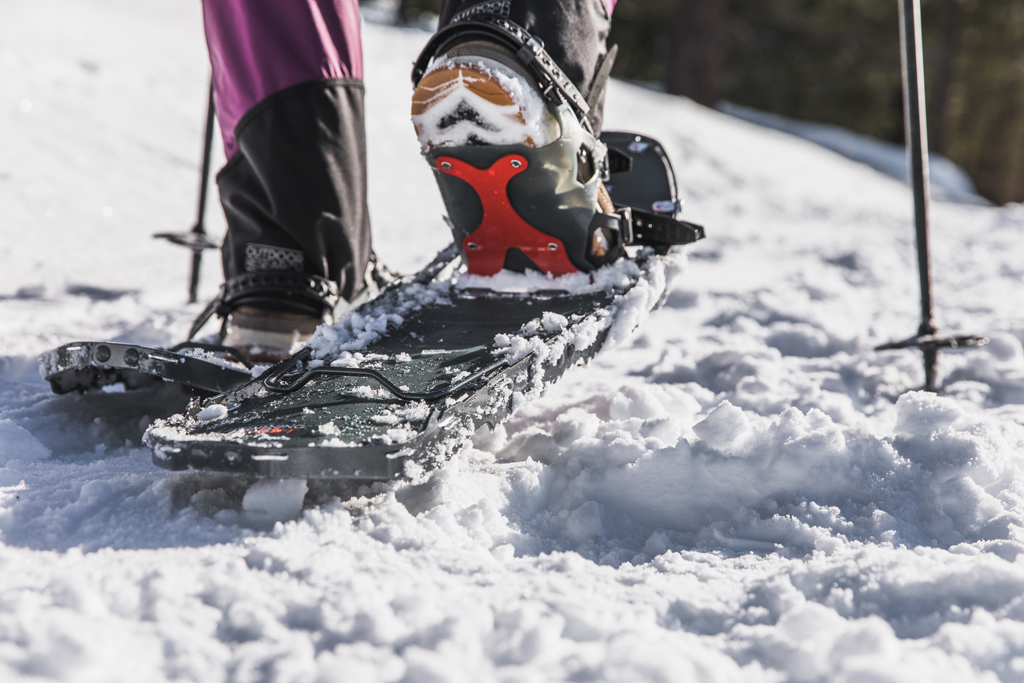
The Lightning Ascents are available in 22 and 25 inches for women, and 22, 25 and 30 for men. But like I said, don’t let labels limit you. To choose, add your body weight plus the largest amount of gear you’ll be carrying; the sum is the max recommended weight/load limit you will need. I use the 25-inch length model, which has a maximum load of 210 pounds, meaning I can use them while wearing a fully loaded 55-liter multiday pack. But for easygoing day adventures, the 22-inch length model would be more than adequate for me (I weigh 130 pounds without my gear).
The Lightning Ascents are on the lighter side of the spectrum for technical snowshoes, with the women’s 25-inch snowshoes coming in at three pounds, 14 ounces, and the men’s 25-inch shoes weighing in at four pounds, three ounces. When the weight is on your feet, ounces matter, particularly when you’re breaking trail in fresh snow.
Bindings
The Lightning Ascent snowshoes come equipped with PosiLock™ AT rubber bindings that are easy to use with gloves on. The three front straps and single rear strap provide a snug custom fit around most footwear, even snowboard boots. Out on the trail, the straps never loosen or freeze, both issues I’ve experienced in the past with nylon webbing-style bindings. They are also remarkably comfortable. Even on long days out, I never feel any pinching or rubbing through my boots.
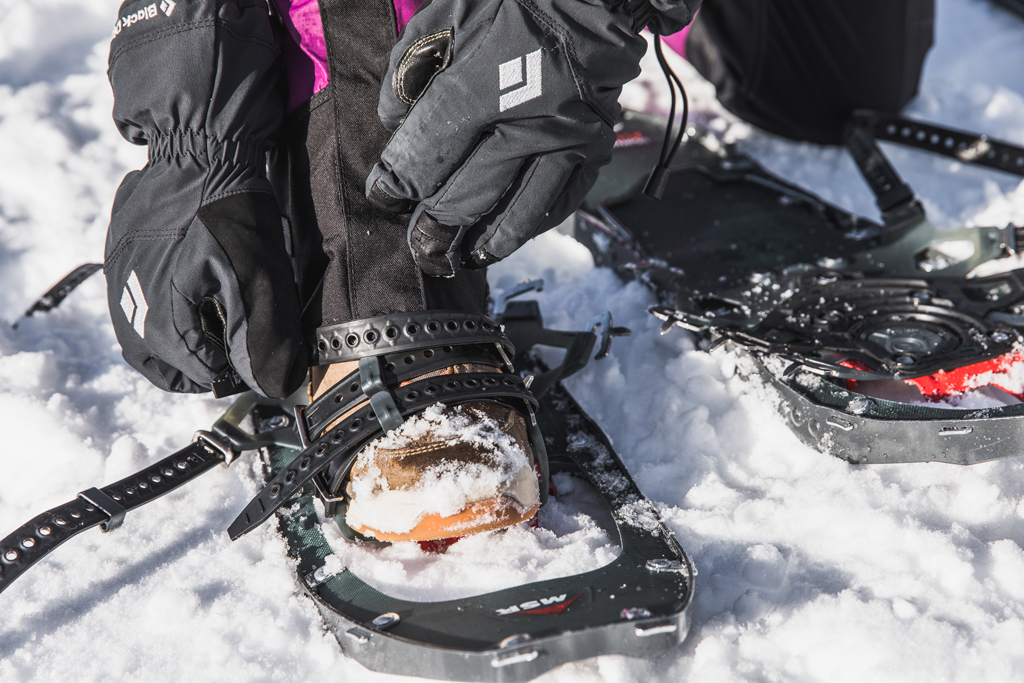
Navigating in steep terrain, my boots never wiggle or twist, making me feel very secure. My one minor criticism is regarding the first toe strap, which tends to come out of the strap clip over time, but never flops around enough to be troublesome. All the other straps stay secure.
Traction
The Lightning Ascents have three different types of traction that let them grip most snowy and icy surfaces: 360-degree Traction™ teeth that run the entire circumference of the frames, steel crampons under the toes, and two steel cross-member bars under the balls and heels of your feet. This traction combo makes for an excellent mountaineering snowshoe that will get you up nearly any slope, whether you want to go straight up or traverse. Descending feels very secure; I never slip going down steep inclines; though to be honest, sliding down mild to moderate slopes on snowshoes that lack perimeter traction is pretty great fun!
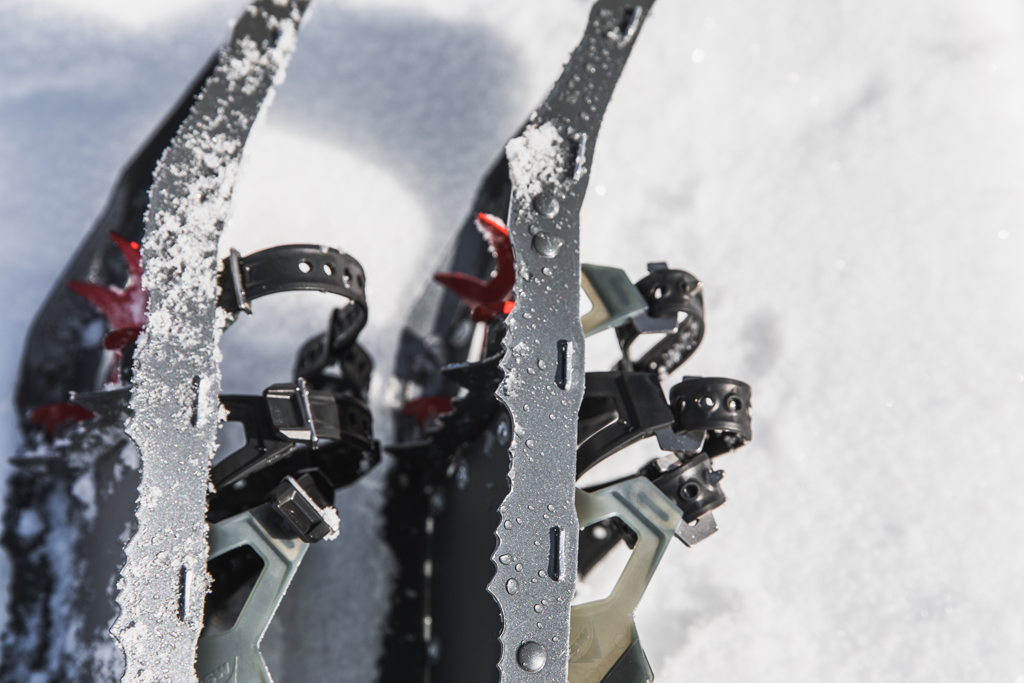
An important note: these frames are designed for serious grip in challenging conditions. They can tear a puffy down jacket, insulated snow pants or other vulnerable materials, so watch where you aim the teeth.
Flotation
Decking, the material that is stretched around the frame and supports the bindings, is the key to a snowshoes’ flotation, or how well it prevents sinking in snow. The Lightning Ascents offer good flotation in a variety of conditions thanks to the wide surface area of their durable TPU-coated nylon decking. However, I do experience some sinkage (that’s the technical term) in fresh, light powder.
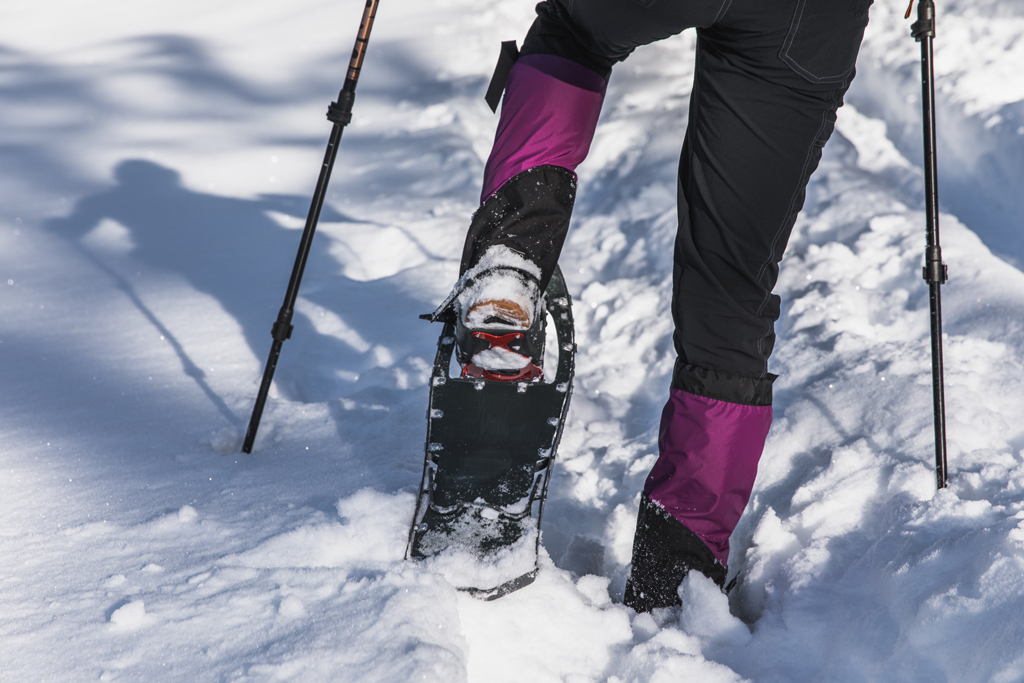
Though the narrower design makes for a more natural gait, it can sacrifice the flotation to some degree. If you plan to snowshoe in powder often, consider adding the optional 5-inch tails for additional surface area.
Heel Risers
Categorize heel risers under something you never knew you loved and needed until using them. They pop up from the frame to elevate your heels away from the decking when walking up an incline. MSR’s heel risers, known as Ergo™ Televators, make walking up steep slopes almost easy; the extra height helps neutralize some of the extreme angle. They’re easy to raise up and down with either your hand or a trekking pole handle, and they’re incredibly stable. I’ve never had one wobble or collapse. Your calves will thank you, and you’ll never go back to “regular” snowshoes again. Ever.
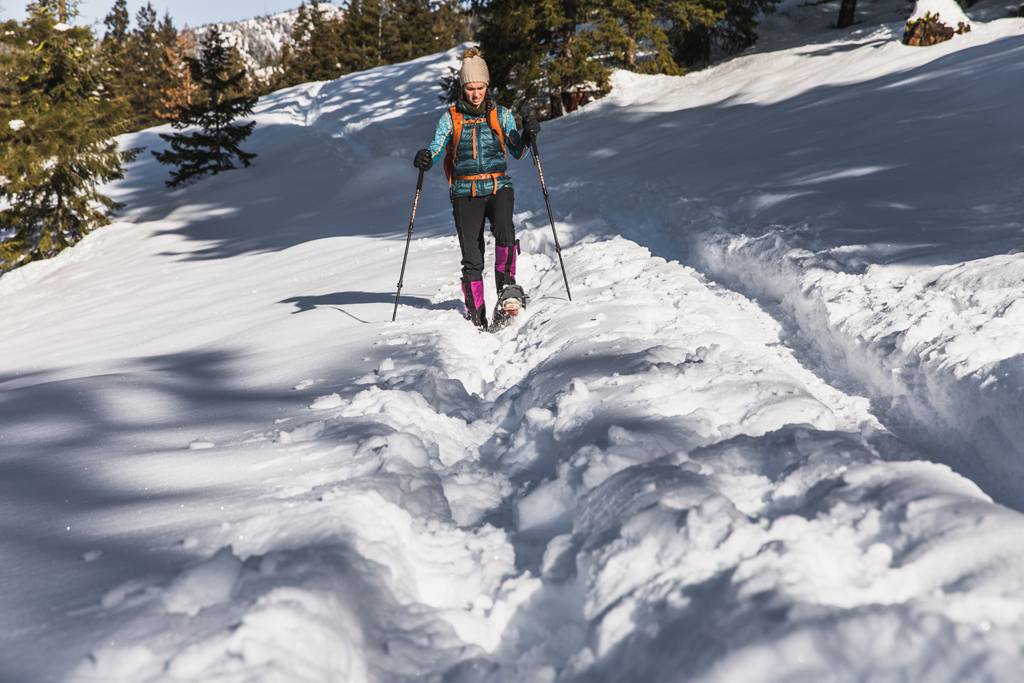
A Note On Trekking Poles
I always snowshoe with trekking poles, unless the terrain is flat the entire time. They help with stability and are useful in popping up your heel risers without having to bend or crouch. Get a pair of snowshoe-specific poles, or upgrade your current trekking poles with snow baskets, otherwise they’ll just sink unhelpfully into powder.
Final Thoughts
If you love snowshoeing and plan to tackle anything beyond flat terrain, you will not regret investing in the Lightning Ascents—just make sure you’re up on your avalanche knowledge.
Beyond performing well on rolling hills and steep terrain, they will last for years thanks to high quality materials and serious engineering on MSR’s part. If you’re looking for more beginner setups or running snowshoes, check out our gear guide on this year’s best snowshoes.
